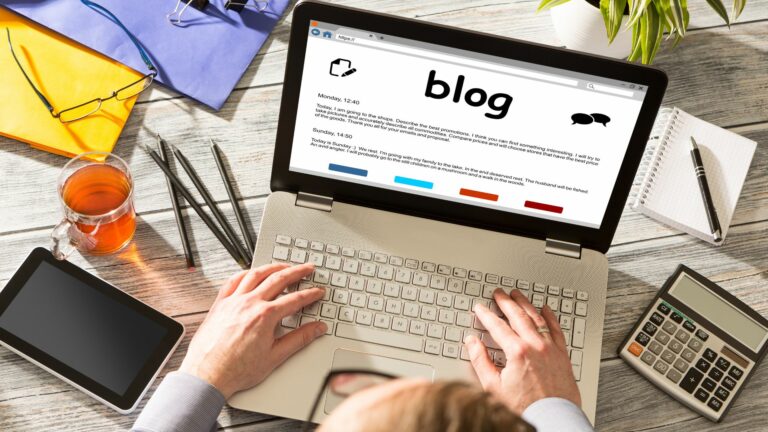An effective invoice is essential for a freelance writer to ensure prompt and proper payment for their services. A well-designed invoice reflects professionalism and provides clarity to clients about what they’re being charged for. Freelancers must pay attention to the details that comprise an invoice, from personal branding elements to the breakdown of services rendered.
While it may seem straightforward, many freelancers overlook the importance of tailoring an invoice to their business needs. A systematic approach to invoicing can help freelancers avoid common pitfalls such as delayed payments or disputes over terms. Invoices are written agreements between the writer and the client detailing the work completed and expected payment.
Key Takeaways
- A professional invoice enhances a freelance writer’s image and details chargeable services.
- Using a consistent invoice template streamlines the billing process and prevents potential payment delays.
- Accurate and thorough invoices are crucial in maintaining financial transaction transparency and facilitating client trust.
Setting Up Your Invoice Template
Creating an effective invoice template is crucial for freelance writers to ensure timely and accurate payments. A well-organized template saves time and presents a professional image to clients.
Choosing the Right Template and Software
Freelance writers should begin by selecting a freelance writer invoice template that suits their business needs. Templates are available in various formats, including PDF, Excel, and Google Sheets. Invoicing software like FreshBooks or invoice generators available online can provide customizable professional invoice templates, offering ease and efficiency.
- PDF: Preferred for sending read-only documents.
- Excel and Google Sheets: Ideal for those who want to manually track their invoices.
- Invoicing software: Useful for automating the invoicing process.
Designing a Professional Header
A professional header on an invoice sets the tone and establishes a brand identity. It should feature the freelancer’s name or company’s name prominently. Freelancers can use Google Docs to create a header or explore professional invoice templates for a more polished appearance.
- Bold the name or company name.
- Use a larger font size to make it stand out.
Including Essential Contact Information
The invoice must include the necessary contact information of the freelance writer and the client. This should encompass the writer’s address, phone number, email, and website. Client details should mirror this information. Every professional invoice template contains fields for such information, and it is crucial to fill them out fully to prevent payment delays.
- Freelancer’s contact details
- Client’s contact details
Filling Out Invoice Details
When crafting a freelance writing invoice, including a clear description of services, an accurate invoice number, and specific payment terms with due dates is critical. These elements ensure clarity and facilitate timely payment.
Writing a Clear Description of Services
A freelancer should itemize services with a clear description for each. This can range from blog posts to comprehensive content strategies. For example:
- Blog post on health and wellness, 800 words
- Email marketing copy for a monthly newsletter
Each service description should include the scope of work and the total amount to be billed.
Assigning an Accurate Invoice Number
Each invoice must have a unique invoice number. This facilitates easy tracking for both the freelancer and the client. An invoice number can follow a sequence or incorporate the date of issuance, such as INV-20240204.
Specifying Payment Terms and Due Dates
The invoice should clearly state payment terms and the due date. Common payment terms include:
- Payment upon receipt
- Net 15, Net 30, etc.
Display the due date prominently to avoid any confusion. Include the subtotal and any taxes or discounts before stating the due amount.
Finalizing Your Invoice
Creating the final draft of a freelance writing invoice requires careful attention to financial details and clarity of information. It ensures that clients understand the charges, and the freelance writer secures prompt and accurate payment.
Calculating Totals and Applying Taxes
- Subtotal: Begin by summing the charges for each listed service to calculate the subtotal.
- Taxes: If applicable, calculate and apply the local or national taxes.
- Discounts: Subtract any agreed-upon discounts from the subtotal.
- Total: Add taxes to the subtotal, post-discounts, to arrive at the total amount due.
Reviewing for Accuracy and Completeness
- Breakdown of Services: Ensure each service provided is listed with a clear description and corresponding price.
- Notes: Include any relevant notes that might affect payment, such as payment due date or preferred payment methods.
- Amount Due: Check that the amount accurately reflects the total and includes all services rendered.
- Date Prepared: Verify the invoice date is correct, as it may affect accounting records and tax filings.
Invoices should reflect a comprehensive and detailed view of the transaction between a freelancer and their client, including all financial components, like payment schedules and service fees.
Sending Your Invoice
When the service is complete, a freelancer must ensure their invoice is delivered promptly and through a method that reaches the client seamlessly.
Choosing Appropriate Delivery Methods
Freelancers should choose a delivery method that aligns with the client’s preferences. Commonly, they send an invoice via email because it is efficient and provides a written record of the transaction. Essential considerations for emailing professional invoices include:
- Email Subject Line: Craft a clear and informative subject line, like “Invoice #1022 for [Project Name] – [Your Name]”.
- Attachment Formats: Attach the invoice in universally accessible formats such as PDF.
- Email Body: Briefly summarize the invoice contents and include any payment instructions.
- Contact Details: Double-check to ensure the client’s contact details are accurate to avoid delivery issues.
Following these steps can encourage on-time payments and maintain professional correspondence.
Including a Personal Note or Reminder
Including a personal note can differentiate a freelancer from the competition. It can be a simple thank you or a reminder of the payment terms. Here’s what a freelancer might include:
- Gratitude: A brief “Thank you for your business” recognizes the relationship’s value.
- Payment Reminder: Politely mention the due date, like “Kindly note that payment is due by [Date].”
Freelancers may also set up a follow-up system to remind clients of upcoming or overdue payments, ensuring they stay on top of their accounts receivable without appearing overbearing.
Frequently Asked Questions
Certain elements are essential to ensure accurate and timely payments when crafting a freelance writing invoice. These can include clear breakdowns of services, contact information, and payment terms.
What components should be included in a freelance writing invoice?
A comprehensive invoice should contain the freelancer’s contact information, client’s contact information, invoice number, date of issuance, detailed description of services provided, the total amount due, payment terms, and applicable taxes or additional fees.
Can you provide a step-by-step guide to creating a freelance writing invoice?
- Start with a template or invoice generator.
- Fill in your business information and logo if available.
- Include the client’s contact details.
- Assign a unique invoice number.
- Date the invoice appropriately.
- List provided services with descriptions and costs.
- Calculate and add any applicable taxes.
- Specify payment terms and due date.
- Add notes for any special instructions or payment options.
What are the best practices for formatting a freelance writer’s invoice?
The invoice should be cleanly formatted with a professional layout. Use a legible font and organize the information logically to ensure the client can easily understand and process the payment. Keep the style consistent across all invoices for brand recognizability.
How can I generate an invoice for my freelance writing services using Word or PDF templates?
Individuals can use Microsoft Word’s invoice templates or PDF editors to create and fill out forms. They should include all the necessary components and save the completed document as a PDF to maintain its formatting and avoid alterations.
What information is mandatory for a self-employed freelance writer to put on an invoice?
Mandatory information includes the writer’s name or business name, address, contact details, description of services, total charges, payment instructions, invoice number, and the date of issuance. A tax identification number may also be needed if registered for tax purposes.
Are there any free tools or software freelancers can use to create professional invoices easily?
Freelancers have various free tools, such as invoice generators and accounting software like Freshbooks or Wave, Google Docs, and Microsoft Office templates. These assist in producing professional-looking invoices efficiently and might offer additional features like expense tracking and financial reports.





